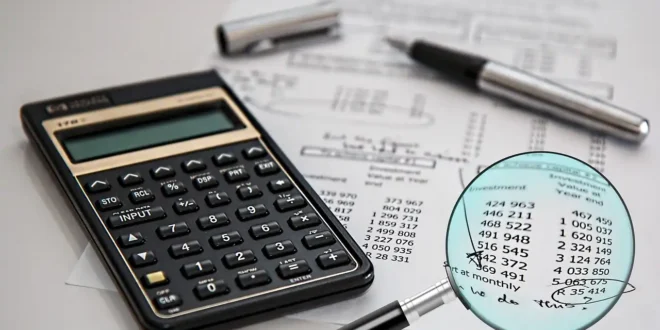In the world of business, some might argue that the thrilling sagas are all about daring entrepreneurs and groundbreaking innovations. But let’s turn the spotlight to something equally gripping, yet often overlooked: your profit and loss statement.
This unassuming document, often tucked away with professional bookkeeping services, holds tales of triumphs, if only one knows how to listen.
Imagine, for a moment, if your profit and loss statement had a voice. It wouldn’t just be chattering about numbers and percentages. Instead, it would be whispering secrets about the health of your business, hinting at opportunities hidden in plain sight, and sometimes, sounding alarms you didn’t know you needed to hear.
You don’t need a degree in finance to understand this. With a pinch of curiosity, you’ll find that these statements can speak volumes about where your business is heading, how effectively you’re navigating the financial seas, and what moves you might consider next. Whether you’re a seasoned business owner, a budding entrepreneur, or a taxpayer trying to make sense of it all, understanding the language of your profit and loss statement is like having a financial soothsayer by your side.
What is a Profit and Loss Statement?
A profit and loss statement is like a financial report card. It’s a snapshot that shows you how well your business is performing over a specific period. This document lays out your revenues, costs, and expenses during that time. In simpler terms, it’s like checking your score after a game; it tells you whether you’ve scored a financial goal or if you need to up your game.
Regularly checking this statement is like having coffee with a financial advisor, except it’s a document and, well, doesn’t drink coffee. Professional bookkeeping services often stress the importance of this routine. Why? Because it’s not just about knowing your numbers; it’s about understanding the story behind them. Is your business turning a profit or facing losses? Where are you spending the most? These insights are crucial, like a business health check-up.
And here’s an interesting bit: your profit and loss statement could very well be your business’s fortune teller. It doesn’t just tell you where your business stands today; it gives you the clues to predict and plan for the future. Seeing a consistent increase in revenue? Maybe it’s time to think about expanding. Noticing a recurring high expense? Time to investigate and perhaps cut back.
Reading Between the Lines
You’re likely no stranger to the concept of revenue, the lifeblood of your business. But have you ever taken a moment to truly understand the story your revenue is telling you? It’s not just a number on your income statement and profit and loss statement; it’s a narrative of your business’s health and potential.
Understanding Revenue Trends
Before diving into the analysis, let’s clear up a common mix-up. Your income statement and profit and loss statement are essentially the same thing, a financial report summarizing revenues, costs, and expenses during a specific period. Remember, revenue is your total income before any deductions.
Spotting the Trends
Start by observing your revenue over multiple periods. Is it increasing, stable, or decreasing? An upward trend often signals growth or effective market strategies, while a downward trend could hint at market saturation, declining customer interest, or increased competition. Stability, on the other hand, can either be a sign of market consistency or stagnation, depending on your industry and goals.
Interpreting What These Trends Mean for You
Sure, increasing revenue is great, but it’s the ‘why’ and ‘how’ that reveal more. Did you launch a new product line, ramp up marketing efforts, or tap into a new market? Understanding the drivers behind revenue growth can help you replicate and sustain it.
Dealing with Declines
A decline in revenue is not a cause for panic, but a cue for analysis. Investigate the reasons – is it due to external market conditions, operational inefficiencies, or something else? This is where you need to be a business detective, piecing together clues to form a coherent strategy moving forward.
Dealing with Stable Revenues
If your revenue is steady, ask yourself: are you being complacent? In a rapidly changing business world, constant innovation and adaptation are key. Explore how to read a profit and loss statement to discern whether your stability is a sign of strength or an indicator of untapped potential.
Analyzing Common Expense Patterns
Now, your expenses are just as eloquent as your revenues. Are they proportional to your revenue growth, or are they outpacing it? High expenses might not be a concern if they’re investments leading to greater revenue. Conversely, if expenses are growing without a corresponding increase in revenue, it’s a warning signal.
Efficiency is Key
Evaluate each expense line. Are there areas where you could cut costs without compromising quality or output? Efficiency isn’t about spending less; it’s about spending right.
Tax Insights Hiding in Plain Sight
Ever feel like tax season is a puzzle where you’re missing half the pieces? Let’s discuss how your profit and loss statement (yes, that often ignored or misunderstood report) can be a treasure map for tax planning and saving strategies. It’s not just a record of your past year’s performance but a goldmine of tax-saving clues.
Tax Deductions
Your profit and loss statement isn’t just a bland summary of revenues and expenses. It’s like a detailed diary of your business’s financial story. When you’re looking at this document, especially a profit and loss statement for small businesses, you’re essentially flipping through pages filled with potential tax deductions.
Spotting the Obvious Deductions
Start with the clear-cut ones – expenses like rent, utilities, and salaries. They’re like low-hanging fruits waiting to be plucked. These are typically deductible and can significantly lower your taxable income.
Now, let’s look beyond the obvious. Did you pay for professional development courses last year? Maybe there was that new software subscription? These are often overlooked, yet they can be deductible too. It’s these nuances in your profit and loss statement that can turn the tide in your favor at tax time.
Maximizing Tax Planning with Strategic Insights
Forecasting for the Future
Your profit and loss statement isn’t just a rearview mirror; it’s a crystal ball too. You can use it to forecast future profits and strategize for tax efficiency. For instance, if it looks like profits are on an uptick, you might consider making some purchases or investments before the year-end to balance out your taxable income.
Understanding Your Tax Bracket
Knowing where your income sits in tax brackets is crucial. This awareness lets you make informed decisions like whether to accelerate or defer income. Your profit and loss statement gives you the numbers; you need to use this information strategically.
Tailoring Tax Strategies to Your Unique Situation
Remember, every business is unique, and so are the tax strategies. What works for a retail giant might not apply to your cozy café or budding tech startup. Use your profit and loss statement to tailor a tax strategy that fits your business like a glove.
While diving into your profit and loss statements is empowering, sometimes bringing in a professional for a second opinion is wise. They can spot opportunities or pitfalls you might have missed.
The Misunderstood Metrics and What They Really Mean
There are some unsung heroes in your profit and loss statement format – the misunderstood metrics. These numbers might not be the ones you brag about at networking events, but they’re the silent workhorses that really tell you how your business is faring.
1. Gross Margin
This figure might seem like just another line in your year-to-date profit and loss statement, but it’s more than that. Your gross margin reveals the efficiency of your production or service delivery. It’s calculated as the difference between sales and the cost of goods sold (COGS), divided by sales. The higher the percentage, the more you retain on each dollar of sales to cover your other costs.
Now, you might think, “Great, I’ve got a high gross margin, I’m all set!” But hold on. A high gross margin is like a double-edged sword. It’s fantastic, yes, but it could also mean you’re not investing enough back into your business. Maybe you’re being a bit too thrifty, or perhaps you’re missing opportunities to grow. On the flip side, a lower margin could signal that your costs are creeping up or your pricing strategies need a revamp.
2. Operating Margin
This metric is the ninja of your profit and loss statement format. It tells you what percentage of your revenue is left over after paying for variable production costs – a key indicator of your company’s operational efficiency.
Calculating it is simple: subtract operating expenses from your gross profit and then divide by total revenue. What you get is a percentage that reveals the effectiveness of your management strategies and operational controls.
A strong operating margin suggests you’re a wizard at managing costs and maximizing revenue – the business equivalent of having your cake and eating it too. A weak one, however, could be a red flag that your expenses are starting to outweigh your sales – time to tighten those purse strings!
We hope you found this article helpful. If you did, be sure to check out our blog for more great content like this.
 SlushWeb Bringing Facts to Light
SlushWeb Bringing Facts to Light



